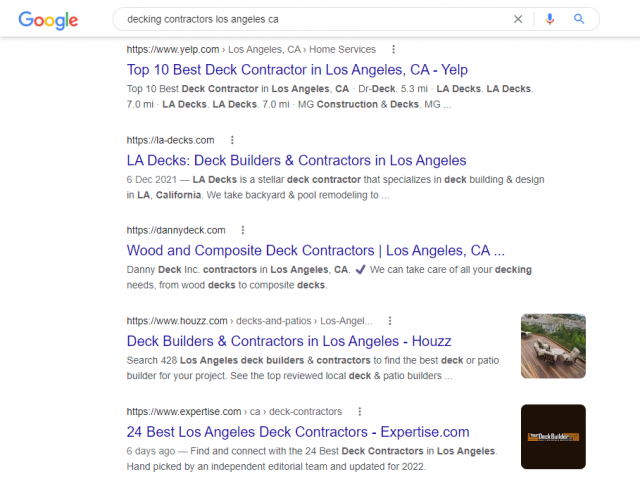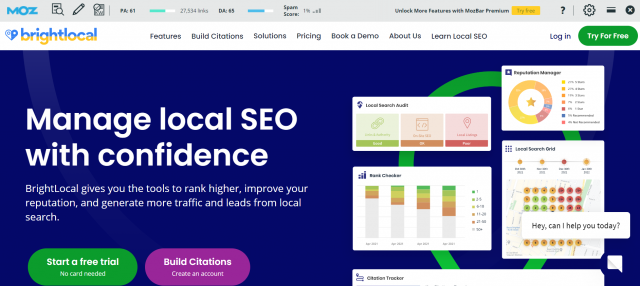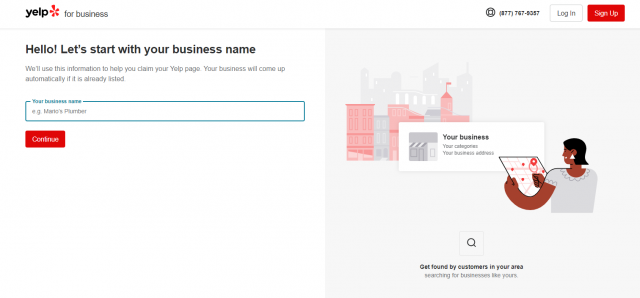
Building Local Citations Manually
When it comes to building local citations, making manual submissions is an easy place to start. Taking this route requires no special skills or professional tools, although that isn’t to say there aren’t a few best practices to be aware of and considerations to keep in mind. Building citations yourself can be time-consuming, so you may want to consider a citation building service, but we’re going to run you through exactly how to do it.
How do you build local citations to boost local SEO?
There are three core ways to build local citations to boost your local SEO results:
- By making manual submissions to directory and niche industry sites
- Via a data aggregator
- Using an API
Many local businesses will begin with manual submissions as it’s easy to do, requires no special tools to get started, and can be more accurate than automating the process, providing the person creating the listings has an eye for detail.

What to Do Before Making Manual Submissions
Before you can start to create listings, you’ll first need to perform an audit to identify and record existing citations for your business. Doing this beforehand means you won’t waste time accidentally creating duplicate listings. It also allows you to identify outdated or incorrect citations and perform vital remedial work before new listings are added to the mix.
Any incorrect information, including inconsistencies in your business name, address, and phone number (NAP), should be updated as a priority. This is an essential task because incorrect information is a known source of irritation for local consumers.
Related: How to Land Your First Local SEO Client – Free Online Course
A factually incorrect citation could see you miss out on more than half of available sales opportunities. 68% of consumers say they would stop using a local business if they came across an incorrect directory listing. Additionally, almost a quarter report of consumers that an incorrect address found online led them to visit the wrong business location within the last 12 months.
No small business can afford to have inaccurate information online, confusing consumers and causing them to distrust your business. Inconsistent NAP data can also lead Google to question what it knows about your business and lower your search visibility. So don’t be tempted to skip this step when manually building local listings.
If you’re struggling to find your NAP mentions using Google, try a tool such as Citation Tracker or the Local Listings Health Scanner.
Build a List of Target Sites
A key stage in the manual submission process is identifying the directory sites and other platforms where you’d like your business information to appear.
Research shows that domain authority, industry relevance and local relevance are the top three most important factors when choosing which citation sites to submit to. Whether or not a site displays user reviews and audience size are also vital considerations.
Performing quality control to weed out inferior or irrelevant sites that won’t enhance your local search visibility or drive traffic to your site can save you time in the long run. Doing so also ensures that the time you invest creating listings is focused entirely on the areas that provide the best return for your efforts.
Assess Competitor NAP Profiles
You can turn to your competitors to discover good-quality citation targets. The advantage of this method is that you can piggyback off the work your rivals have already done by comparing their citation profile with yours. Begin by looking for sites they’ve identified that you don’t have a presence on. Focus on pinpointing niche and local outlets, as these listings are likely giving your competitors an advantage over you in the local search results.
Assessing a rival’s local business listing profile can be automated if you’re using a tool such as Citation Tracker. If you don’t have access to a tool, you can do this manually with Google research. Record your findings on a spreadsheet to keep track of the information.
Use Google to Identify Good Quality, Niche Sites
You can also Google to identify gaps in your current citation profile and further build out your list of targets for manual citation building. For example, searching your business type and industry niche should bring up several directory sites. If there are any major platforms — such as Yelp or the Better Business Bureau — that you haven’t already ticked off, they’ll need to be added to your list.
Look for directories that are specific to your local area, along with platforms focused on your industry. This may include trade bodies, industry organizations, local networking associations, and nearby Chambers of Commerce. The best quality sites will be found within the first few pages of the search results.
There may also be other opportunities to build unstructured citations, such as by connecting with local news outlets, government databases and blogs.

Measure Domain Authority with the Moz Toolbar
The Moz toolbar is helpful for anyone learning to build manual citations. Free to download, it shows the page authority, domain authority, and spam score for any page open in your browser. This makes it easier to identify whether your target directories and industry sites meet the quality threshold necessary to create a beneficial citation.

Use Online Resources
Online resources that compile lists of directory sites relevant to your area or niche can be invaluable when building local citations. This is because much of the research has already been done for you.
This resource lists the best places for business listings for more than 40 industries. It also shares the domain authority of each and indicates whether the listing is free or not.
If you’re based in the USA, Canada, UK, or Australia, this compilation of the top 50 sites for each country also logs domain authority and provides a direct link to each site.
Related: Free Video Course – How to Clean Up and Manage Local Business Listings
Make Manual Submissions
With your list of target sites in hand, you can now start the process of making manual submissions.
Working your way through your list from top to bottom, go to each site and enter your business name in the search bar to verify if there’s already an entry.

If a listing is already present, review each piece of information, including your business NAP, opening hours, URL, and email information to verify accuracy. If they’re correct, go ahead and claim the listing.
If the information isn’t accurate, you’ll need to claim the listing to correct any issues. The process of claiming the listing will vary from platform to platform but will generally require you to prove your connection to the business. This could be by entering a code sent via postcard to your brick-and-mortar location, or via a telephone call or email. In the case of email, your email address will need to match the business’ domain name for a verification link to be provided.
If there’s no current listing, you can go ahead and start to build your manual citations. You’ll often see an ”add business” option on the directory site, which will present you with a form to complete. Ensure that you enter your NAP in the same format each time.
Remember that you may need to go back and update your business information in the future. Maintain a spreadsheet of manual submissions with a link to each directory site and the usernames and passwords for each. You’ll need these to log in and update your citations when any information changes.
Alternatively, you can go ahead and lean on a listings management tool for any updates you may need to make.